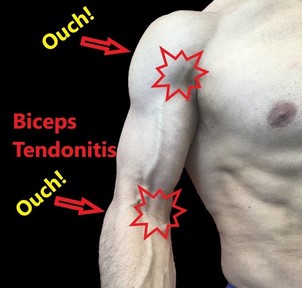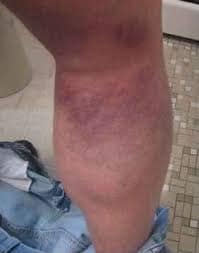Thinking of picking up running? Read this first.
Running is one of the easiest and most accessible sports people can do around the world – you dont need much gear, just basic running gears and off you go. Singapore’s weather is pretty good for jogging and running too, being very predictable most of the time being hot.
Running has good health benefits such as losing excess weight, getting fit or even quitting smoking (Nielson et al, 2012)! But of course, running also comes with its set of risks and potential running injuries.
Contents
- 1 Running risks
- 2 Shin Splints a.k.a Medial Tibial Stress Syndrome
- 3 Achilles Tendinopathy
- 4 Plantar Fasciitis
- 5 Patellofemoral Pain (PFPS)
- 6 Solution: general and sports specific physiotherapy BEFORE starting your running journey
- 7 Achilles Tendinopathy
- 8 Plantar Fasciitis
- 9 Patellofemoral Pain (PFPS)
- 10 Solution: general and sports specific physiotherapy BEFORE starting your running journey
Running risks
- BMI > 30kg/m2 increases injury risks and injuries.
- 45-65 had higher incidence of injuries compared to other age groups (Nielson, 2014)
- Medial tibial stress syndrome was the most common among beginner runners (Kluitenberg et al., 2014).
- Medial tibial stress syndrome, Achilles tendinopathy and plantar fasciitis were main injuries sustained by running; Achilles tendinopathy and patellofemoral syndrome were most common in ultramarathon runners (Lopes et al, 2012).
Shin Splints a.k.a Medial Tibial Stress Syndrome
This is a common injury that’s typically found in both soldiers and athletes that’s caused by a runner
- increasing duration
- increasing intensity
- increasing distance
of their trainings (Galbraith 2009).
Patients will report symptoms felt at the lower leg (inner lower leg / tibial border) during exercise and can be felt when touched at the tibia (lower leg) over at least 5 cm. Overload adaptation to the bone is found as reason for the pain in bone scan, MR or CT scan (Moen 2009).
Achilles Tendinopathy
Achilles tendinopathy refers to overuse injuries due to repeated use (strong and release of energy with strong movements of the achilles tendon). Individuals who have more stiffness or stiffer joints tends to be more at risk of developing this injury.
When treating tendon pain a new strategy by classifiying degree of changes in the tendon as: reactive, disrepair and degenerative tendinopathy is used in the tendon continuum to add or decrease load in reducing pain (Clain et al, 1992).
Current physiotherapy treatments for Achilles tendinopathy include treatments such as
- joint mobilizations for restricted movement
- manual therapy
- controlled tendon loading through proper exercise regime
- ultrasound therapy
- sports taping
- anti-inflammatory modalities
Plantar Fasciitis

Patients with plantar fasciitis usually report intense, sharp pain at the bottom of their heel, typically moreso
- the first 10-20+ steps in morning or after a period of inactivity or rest
- after exercises (and not during)
Symptoms include pain at bottom of heel, usually worse in morning first few steps or after inactivity, greater pain after exercises (not during).
When weight is put through the foot, the lower leg loads and creates tension through the plantar fascia; it is this tension, called the windlass mechanism, that adds critical stability to the loaded foot with minimal muscle activity (Tweed 2009).
Some risk factors that contribute to plantar heel pains include:
- decreased range of motion (dorsiflexion) in ankle
- flat foot when moving
- high impact loaded
- prolonged standing
- poor shoe fit
- health issues such as diabetes
- over weight / high BMI (loads the joint and soft tissues more)
Physiotherapy treatments will include
- strength and stretching routine
- night splints
- joint mobilizations
- ultrasound therapy
- sports taping
- orthotics
- modalities such as shockwave therapy
Patellofemoral Pain (PFPS)
This is yet another common pain that runners (especially beginner runners) develop…and yes, I have it too. Patellofemoral pain is a general term to include pain in the knee, the surrouding soft tissue and in front or behind the knee.
The general reasons why patients develop patellofemoral pain syndrome (a type of knee / patellar pain) includes:
- weakness in the quadriceps muscle
- weakness in the medial quadriceps
- tight iliotibial band
- tight hamstrings muscles
- weakness of tightness in the hip muscles
- tight calf muscles
Solution: general and sports specific physiotherapy BEFORE starting your running journey

Often times, people are not sure how to start, how much to start, when to stop, what to do, and it’s precisely because of this that often leads to higher number of running injuries that can stop their running journey from going far.
The recommendation is this idea called “prehab” where you can come in for a series of physiotherapy to train up your body, joints and muscles specificly for your sports; as well as condition your body before you start any forms of exercise.
They will probably help you pickup areas where you are more prone to injury, strengthen it before it even becomes a problem and you can run better, longer and further…with less risk of running injuries too.
This is a common injury that’s typically found in both soldiers and athletes that’s caused by a runner
- increasing duration
- increasing intensity
- increasing distance
of their trainings (Galbraith 2009).
Patients will report symptoms felt at the lower leg (inner lower leg / tibial border) during exercise and can be felt when touched at the tibia (lower leg) over at least 5 cm. Overload adaptation to the bone is found as reason for the pain in bone scan, MR or CT scan (Moen 2009).
Achilles Tendinopathy
Achilles tendinopathy refers to overuse injuries due to repeated use (strong and release of energy with strong movements of the achilles tendon). Individuals who have more stiffness or stiffer joints tends to be more at risk of developing this injury.
When treating tendon pain a new strategy by classifiying degree of changes in the tendon as: reactive, disrepair and degenerative tendinopathy is used in the tendon continuum to add or decrease load in reducing pain (Clain et al, 1992).
Current physiotherapy treatments for Achilles tendinopathy include treatments such as
- joint mobilizations for restricted movement
- manual therapy
- controlled tendon loading through proper exercise regime
- ultrasound therapy
- sports taping
- anti-inflammatory modalities
Plantar Fasciitis

Patients with plantar fasciitis usually report intense, sharp pain at the bottom of their heel, typically moreso
- the first 10-20+ steps in morning or after a period of inactivity or rest
- after exercises (and not during)
Symptoms include pain at bottom of heel, usually worse in morning first few steps or after inactivity, greater pain after exercises (not during).
When weight is put through the foot, the lower leg loads and creates tension through the plantar fascia; it is this tension, called the windlass mechanism, that adds critical stability to the loaded foot with minimal muscle activity (Tweed 2009).
Some risk factors that contribute to plantar heel pains include:
- decreased range of motion (dorsiflexion) in ankle
- flat foot when moving
- high impact loaded
- prolonged standing
- poor shoe fit
- health issues such as diabetes
- over weight / high BMI (loads the joint and soft tissues more)
Physiotherapy treatments will include
- strength and stretching routine
- night splints
- joint mobilizations
- ultrasound therapy
- sports taping
- orthotics
- modalities such as shockwave therapy
Patellofemoral Pain (PFPS)
This is yet another common pain that runners (especially beginner runners) develop…and yes, I have it too. Patellofemoral pain is a general term to include pain in the knee, the surrouding soft tissue and in front or behind the knee.
The general reasons why patients develop patellofemoral pain syndrome (a type of knee / patellar pain) includes:
- weakness in the quadriceps muscle
- weakness in the medial quadriceps
- tight iliotibial band
- tight hamstrings muscles
- weakness of tightness in the hip muscles
- tight calf muscles
Solution: general and sports specific physiotherapy BEFORE starting your running journey

Often times, people are not sure how to start, how much to start, when to stop, what to do, and it’s precisely because of this that often leads to higher number of running injuries that can stop their running journey from going far.
The recommendation is this idea called “prehab” where you can come in for a series of physiotherapy to train up your body, joints and muscles specificly for your sports; as well as condition your body before you start any forms of exercise.
They will probably help you pickup areas where you are more prone to injury, strengthen it before it even becomes a problem and you can run better, longer and further…with less risk of running injuries too.
Where To Next?
- Go to Home / Start
- Learn and find out more about your pains (bones, muscles, joints, tendons, ligaments, nerves etc) at Pain Conditions & Injuries
- Visit our shop to see products we recommend for pain relief, heating, treatments and more
- Contact us





